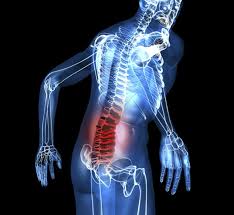Häufigkeit und Fakten zu den Kosten chronischer Schmerzen
Chronic pain, besides causing untold suffering for millions of patients worldwide, tears at the very economic and social fabric of our culture. To date there are no comprehensive pan-European figures outlining the incidence of the various chronic pain syndromes and their cost to society. However, investigators in various countries have begun to compile information of this nature, which illustrates the magnitude of suffering due to chronic pain. Note that figures vary depending on the definition of pain used, and the specific questions addressed to the people surveyed.
Snapshot of Available Study Results
- In a prevalence study of persistent pain in Denmark, researchers found that approximately 38% of the general population suffers from chronic pain. (Andersen and Worm-Pedersoen 1989).
- In an attempt to quantify the total cost of chronic non-cancer pain to the Irish economy in 1995, a study estimated that a sample of 95 patients had already cost the economy £1.9 million at the time of their referral to a multidisciplinary pain clinic. (Sheenan et al. 1996 ).
- An epidemiological survey of chronic pain in Sweden found that 45% of all adults have experienced recurrent or persistent pain, 8% severe persistent pain (von Korff et al. 1990).
- A British survey found that 7% of a large random sample of adults questioned at a single point in time were in substantial pain (Bowsher et al. 1991).
- In a recent review of patients referred to a Danish pain center, mean pain severity was 7 on a 10 point scale, quality of life measures were severely reduced, 58% had depression or anxiety disorder, 63% had neuropathic pain and 73% of these were taking opiates on referral even though this did not provide adequate pain relief. The study showed that health-related quality of life of chronic non-cancer pain patients is amongst the lowest observed for any medical condition. (Becker et al. 1997).
- Neuropathic pain (classically conceived) affects 25-50% of patients attending most pain clinics (Bowsher 1991).
- Current yearly costs of back pain and sciatica (alone) in the UK are Euro 9 billion, with Euro 1 billion spent each year on direct health case costs (Waddell 1996).
- A study in the Netherlands found that musculoskeletal diseases are the fifth most expensive disease category regarding hospital care, and the most expensive regarding work absenteeism and disability (1.7% of GNP) (van Tulder et al. 1995).
- Pain is reported in 50% of cancer patients (all stages) and in 75% of patients with advanced neoplasms. Each year more than 100,000 cancer patients experience pain at the time of death in England and Wales (Higginson 1997).
- A study carried out in Catalonia (Spain) reported pain prevalence of 78.6% in response to a phone interview asking about any pain complaint experienced in the last 6 months, regardless of its intensity and duration (Bassols et al. 1999).
- The total cost of neck pain in the Netherlands in 1996 was estimated to be US $686 million (Borghouts et al. 1999).
- A postal survey in Sweden found that pain or discomfort, including problems of short duration, were reported by 66% of those questioned, with 40% reporting ‚obvious‘ pain lasting more than 6 months. (Brattberg et al. 1989).
- A broadly based epidemiological study of chronic pain in the Grampian region of the UK found that 50% of those surveyed reported chronic pain or discomfort, including 16% with back pain and 16% with arthritis. In 16% of those surveyed chronic pain was severe. (Elliott et al. 1999).
- More stringent, systematic and uniform methodologic approaches to studying the prevalence (or incidence) of back pain are needed (Leboeuf-Yde et al. 1995).
- Data from a study in Sweden indicate that spinal pain is very common among 35-45 year old men and woman and that it is related to marked limitations in lifestyle for approximately one fourth of those who experience pain (Linton et al. 1998).
- A study of the socio-economic costs of pain syndromes in the UK estimates the direct health care cost of back pain in 1998 to be £1.6 billion. However, this direct cost is insignificant compared to the cost of informal care and the production losses related to it, which total £10.7 billion. Overall, back pain is one of the most costly of all medical conditions (Maniadakis and Gray A2000).
- A recent study in Finland found that, from a pool of 5646 patient visits to primary healthcare services, 40% identified pain as the reason for their visit. One-fifth of patients reported having experienced pain for over six months. One quarter of the pain patients of active working age were receiving paid sick leave (Mantyselka et al. 2001).
- The findings of a study in the Netherlands indicate that chronic pain is also a common complaint in childhood and adolescence (Perquin et al. 2000).
The impact of chronic pain should not, however, be viewed simply in economic terms. Chronic pain has a major detrimental effect on the quality of life of the millions of chronic pain sufferers, and their families, in Europe. Without adequate treatment chronic pain sufferers are often unable to work or even to perform the simplest of tasks. As a consequence, chronic pain patients often endure psychosocial as well as physical hardship including poor nutrition and weight loss, decreased activity, sleep disturbances, social isolation, marital problems, unemployment and financial problems, anxiety, fear and depression.

